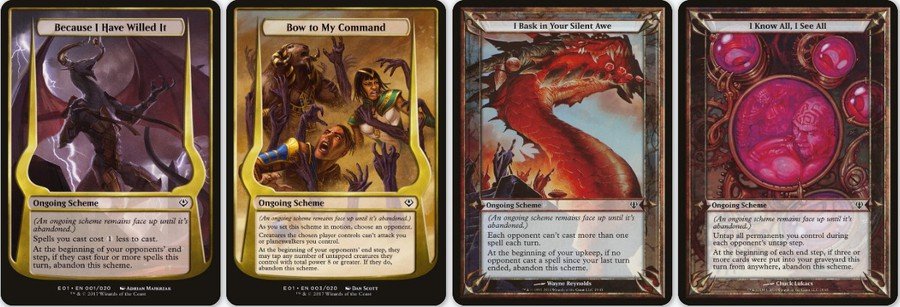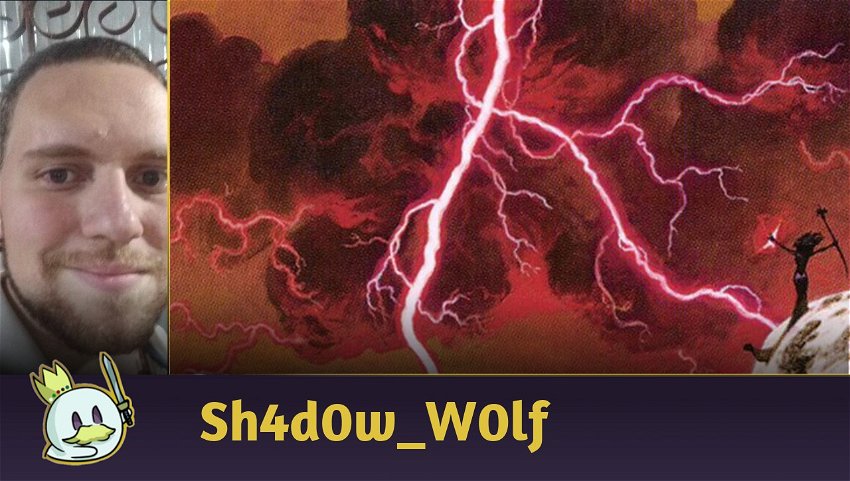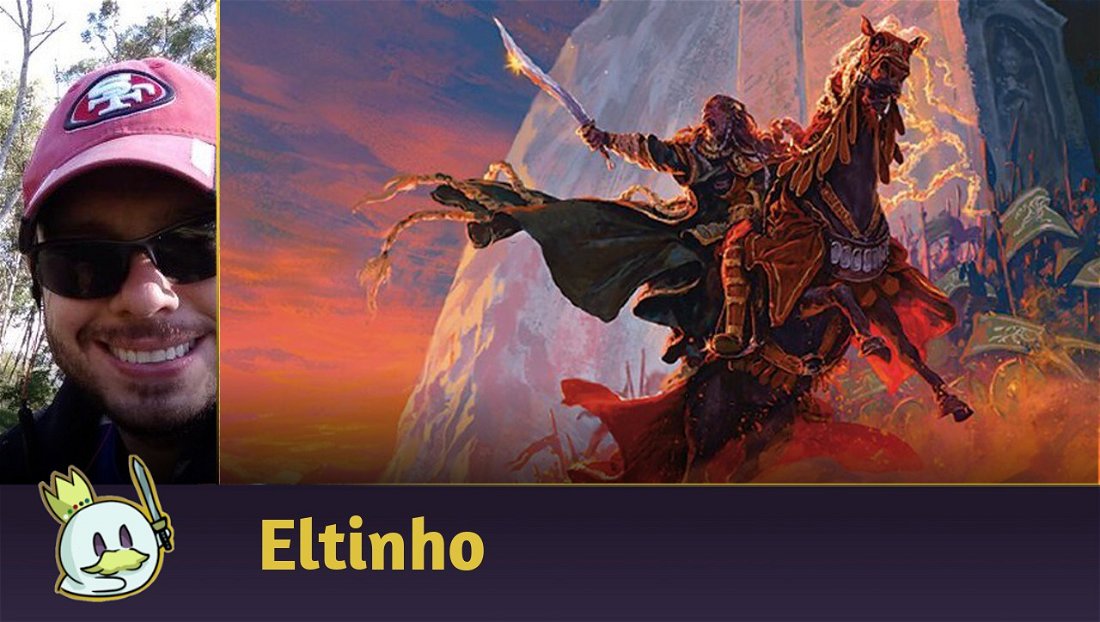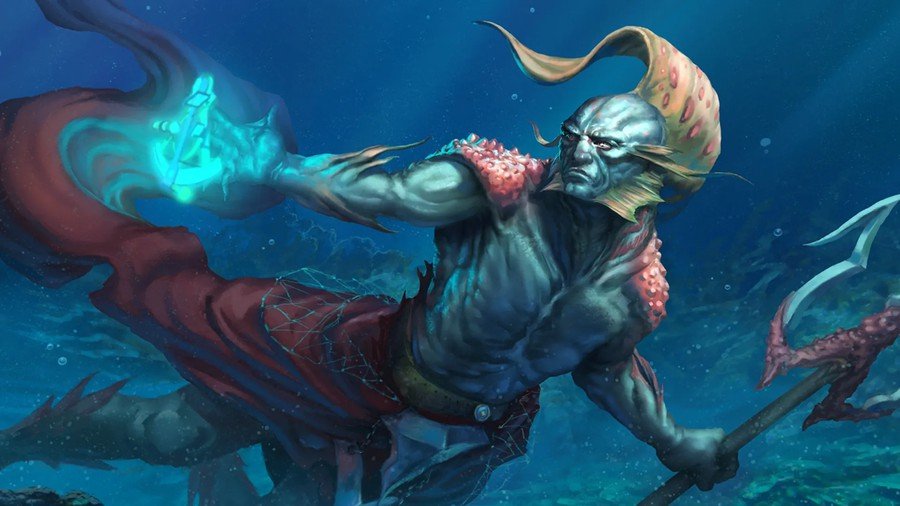Welcome everyone! We continue talking about the card types in Magic.
Today, for convenience of the types we are going to talk about, I decided to quote both. We'll talk about Instants and Sorceries, how they affect Magic: the Gathering, what's the difference between the two, as well as their Types, Supertypes and Cycles!
Instants & Sorceries: The Differences
Non-permanent
Unlike other card types, after casting, these spells go straight to the graveyard and don't stay on the battlefield.
They are known for powerful effects that impact the game, and because of this, cards that bring sorceries and instants from the graveyard or allow them to be recast are quite powerful.
What is the difference between Instants & Sorceries

Sorceries can only be cast at the same time as a permanent, that is, in the main phases of the game, when there are no spells on the stack.
Instants can be cast, unless a condition prevents it, at any time in the game, regardless of how many spells are on the stack.
Typically, these card types have one of five colors or a few in combination, but it's also possible for them to be colorless.

Mark Rosewater, the main developer of the game, has already been asked if sorceries are necessarily stronger than instants, and he replied that not necessarily.
The design team releases what they believe is most healthy for the game and is also responsible for deciding what will be better in instant or sorcery speed.
Stone Rain has a simple effect: it destroys target land. By attacking the mana resource, effects like this often appear on sorcery cards and this allows the player harmed by it to prepare, even with frustration, to perform the turn without that land.
Counterspell is an excellent example of a card that must be an instant. With its effect, this card counters a spell on the stack.
Instants often create challenges in the game that cause a certain amount of “tension” between opponents, as these spells can be activated at almost any time in the game and players have to wait for the unpredictable.
When am I not allowed to cast an instant?
The only time we can't use instants is during the untap and cleanup phases, or in response to state-based effects, since these don't go to the stack.
Instants & Sorceries Cycles
Since Magic: the Gathering was released, we can see that developers like to create cards in cycles. Instants and sorceries are no exception to this rule.
This decision helps create an intuitive impression of the strengths of each of the five colors and the features you'll be able to use.
Alpha Cycle
Let's start talking about the first and most important of all cycles: the Alpha set.

One of the intentions here was really to show what to expect to play with each of the colors, what they would bring, and I don't need to go too deep into what they do, as they are well known.
This first cycle was done with just one color in each spell. Over time, the game evolved, and other cycles were made, including more colors and more versatility.
First Charms

This is the cycle of instant charms from Mirage, bringing versatility to the game.
Each charm has the potential of three situational cards in your hand, covering more possibilities for response, and this idea was so successful that it was later used in other cards.
First Multicolored Charms (3 Colors)

These were the first multicolor cycle, which in the future brought the designs that would be developed in the planes of Alara, Ravnica, Tarkir and, most recently, New Capenna.
The cost of three mana of different colors required a more solid mana base to cast, but its effects were worth the effort. Anyone who has played against Esper Charm knows how frustrating this card can be.
Guild Charms

Ultimatums

Unlike charms, ultimatums are spells that cost seven mana of three different colors and were released on Alara and Ikoria. Because they are too color intensive, they have powerful effects, which can fully impact the game.
Some complications of such designs are that, even though they are cards with a high mana cost, it is difficult to create a card that has the potential to win the game as soon as it is cast. This can make the game uninteresting, as if everything boils down to just casting that spell (like Ugin, the Spirit Dragon does in some games).
At the same time, it's a lot of mana for just one card and if the effect isn't absurd, it justifies spending so much mana on it.
The champions on this list are Cruel Ultimatum, which became popular after a memorable topdeck from Gabriel Nassif, Genesis Ultimatum, who saw a lot of play along with elementals in Standard as well, and finally and most importantly, Emergent Ultimatum, which to this day sees play on Pioneer in the Lotus Combo.
Classic Commands
They are Cycles of Commands that are sorceries or instants with four modes and the player can choose two of them.

Here there is no restriction that must be sorceryor instant, this first cycle was very successful, mainly by Cryptic Command, which occasionally still sees play in Modern.
Let's also mention the multicolored ones that were released later.
Tarkir's Commands

These were designed in Dragons of Tarkir, the first being multicolored, and each done in colors allied to the main dragons of the plane.
Strixhaven Commands

The cards made for the Strixhaven cycle complete the cycle of multicolored Commands.
Kamigawa's Epic Cycle

Fated Cycle

Scry Cycle

Pitch Spell Cycle

Pact Cycle

Most Famous Instants & Sorceries
Discard Spells

Counterspells

Sweepers

Card Draw

Extra Turns

Removals

Instants & Sorceries Supertypes
Legendary

In Dominaria, there was a cycle of Legendary Spells.
Its main application difficulty is having a legendary creature or planeswalker on the board, and this "drawback" allows building more powerful spells for a fair mana cost. Also, these are cards that carry memorable moments from our heroes' history.
Snow

It was in Kaldheim that we got the first snow instants and sorceries, despite not being the first set with cards that involve the “snow” mechanic at some level. These cards interact with the number of snow permanents you control to enhance their effects.
Honorable Mention: Ongoing
There are no printed “cards” with the Ongoing supertype. They are actually Archenemy schemes, a casual multiplayer game, where three players battle against one player.
Here are some examples:

Subtypes
It's not always that they get a subtype, and sometimes they create cool mechanics with them, and let's see the four subtypes they can have so far. They are: arcane, trap, adventure and lesson.
Arcane

Arcane spells have this subtype because of an ability called Splice onto Arcane that some of them have.
Basically, the player can add the effect of an arcane card from the hand to a spell with the same subtype being cast, and the card that "gave" its effect to the other is revealed in the player's hand.
Due to the power of adding effects to other spells, many of them have lower than expected performance/power, and end up not seeing much play in any format.
The few that play are individually strong, like Through the Breach and Goryo's Vengeance, or they can resort to combos like Desperate Ritual, and Psychic Puppetry with Ideas Unbound and Lotus Field.
Trap

Zendikar's first set was designed to feel like players were on an adventure and gifted the game with unique mechanics such as level up, allies, and trap cards.
While many of them aren't very playable, they're still a much-loved card type, and many players are eagerly awaiting the release of more cards of the subtype.
Archive Trap sees play in Modern as fetchlands make the job a lot easier and having the cost reduced to zero is very powerful. Mindbreak Trap sees occasional play in Legacy.
Adventure

Throne of Eldraine, much commented for its high-power level that led to several bans across formats, brought a mechanic of great value and somewhat fun.
The power of Adventure is linked to being a natural 2 for 1, generating more value. Cards like Brazen Borrower and Bonecrusher Giant basically see play in all formats, whereas Pegasus Guardian is commonly found on Pauper in blink strategies.
Finally, Lovestruck Beast and Murderous Rider are also found in Pioneer.
Lesson

This last one is the most recent, planned mainly for the Draft, but that has seen play in Standard too, since they are spells accessible from the sideboard, as long as you have a card that makes you Learn.
Environmental Sciences and Introduction to Prophecy are usually found in Pauper's Moggwarts combo, as part of the combo is a card that has "learn", so having those two makes the deck more consistent.
Academic Probation, Teachings of the Archaics and Mascot Exhibition were present in Standard.
Conclusion
I hope you've enjoyed this journey of exploring the basic types of cards and how they play across formats.
We'll meet in the next article, where we'll talk about enchantments!














— تعليقات 0
, ردود الفعل 1
كن أول من يعلق